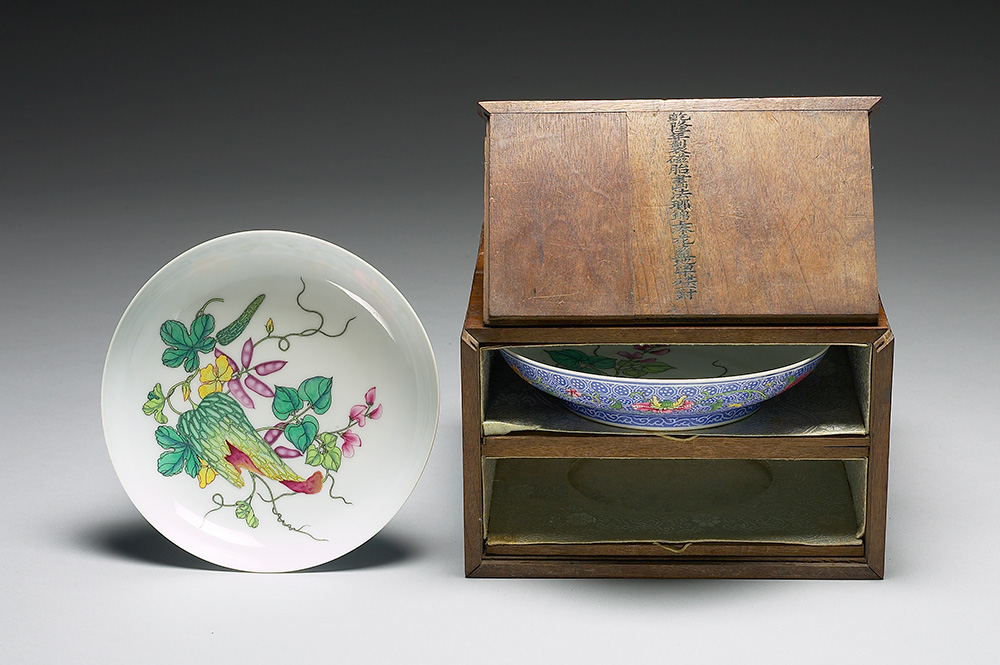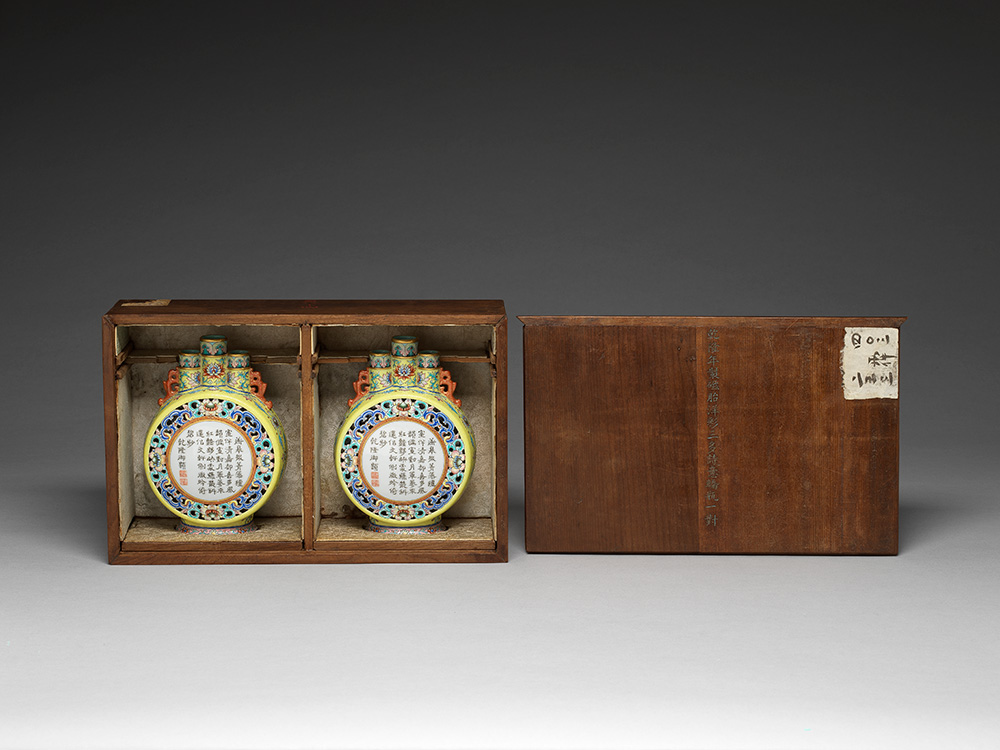Imperial Design & Craftsman's Skill
Continuing the development of the Kangxi and Yongzheng reigns (1662-1735), the porcelain with painted enamels of the Qianlong reign (1736-1795) shows the spirit of striving for new designs. From the angles of form, decoraton and collecting history, the Qianlong painted enamels could be interpreted through three sections "Connotation of Poems and Narrative of Paintings", "Novelty of Brilliance", and "Storage and Collection".
"Connotation of Poems and Narrative of Paintings" presents those painted enamels inheriting the imperial exclusive styles from the Yongzheng reign (1723-1735). The works are decorated with the divine painting-like composition by the imperial craftsmen. Including the ancients' poems and seals to match the composition, each design presents the characteristics of the previous emperor, but also changes in the details. On the contrary, yangcai porcelain produced by the Jingdezhen craft masters had incorporated the Emperor's poems into the decorations to reveal the style of this period. "Novelty of Brilliance" shows the innovative decorative ornaments appearing in the Qianlong period, including the shared motifs on yangcai porcelain and falangcai porcelain as well as the characteristics solely for each of them. "Storage and Collection" examines the extant wood storages, to retrace the process of categorizing, storing, and packaging of the old Qing court's collection and new additions of 18th-century potteries.
Storage and Collection
We can see the porcelain with falangcai painted enamels and similar artworks with yangcai from this exhibition. From the perspective of collecting and preservation to trace the inherited process of the entire group of artefacts, we discover the fact that they are mostly connected to the Qianlong Emperor's involvements on the collection. Especially from the information recorded in the Archives of the Imperial Workshop , it reveals that soon after the enthronement of the Qianlong Emperor, he had begun the inventory and registration of artefacts in the Forbidden City. Meanwhile, he had also organized storage space at Qianqing Palace, to specifically store porcelain with painted enamels across three generations of Kangxi (1662-1722), Yongzheng (1723-1735), and Qianlong(1736-1795). This fact not only presents that Qianlong's admiration on the craftsmanship of painted enamels, which was inherited from the Kangxi Emperor, but also the gesture of embracing contemporary productions in the collection fully delivers the idea to promote the crafts of his time.
Stored in Wood Cases
The Qianlong Emperor encouraged the project of collecting pieces with painted enamels, which is to have the wood cases made for storing the artworks individually or collectively. The wood cases are made from nanmu wood with cushions inserted, and space is created specifically for each piece to ensure the proper storage. Meanwhile, with the name of the artefact carved on the lid of every case, we understand that it was then the classification between falangcai and yangcai began to be noticed. Although with the differentiation in their titles, the emperor eventually gathered them all together in one place.



